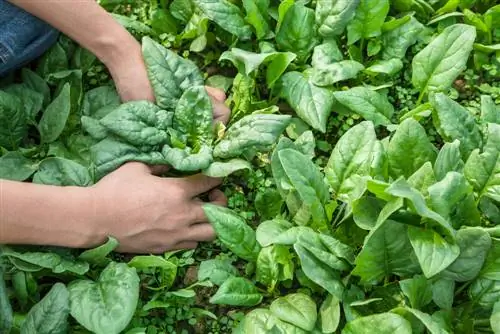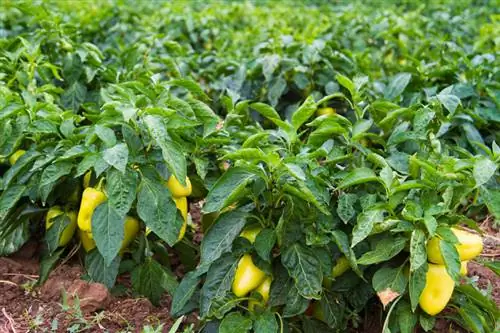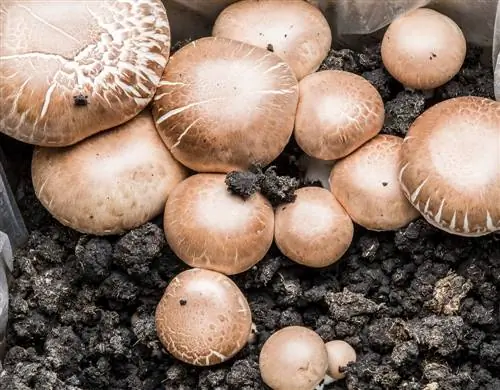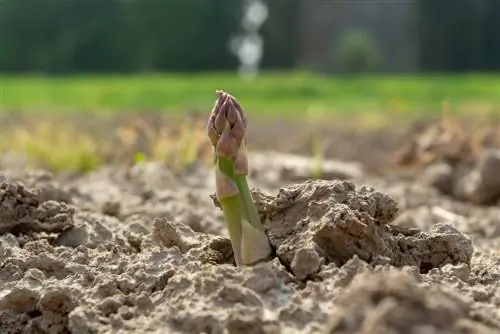- Author admin [email protected].
- Public 2023-12-16 16:46.
- Last modified 2025-01-23 11:22.
Summer spinach grows quickly and is ready to harvest just four to six weeks after sowing. The uncomplicated and vitamin-rich leafy vegetables are therefore ideal as a secondary or intermediate crop.
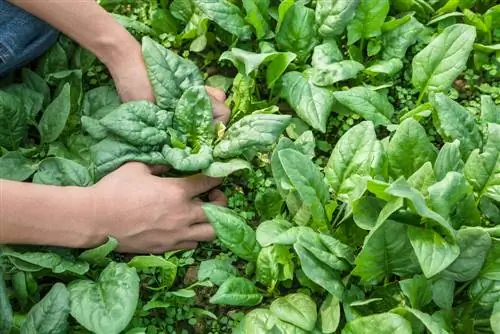
How to grow summer spinach successfully?
To grow summer spinach, choose a location in full sun or partial shade with humus-rich, well-drained soil. Sow it in rows 20-30 cm apart, water regularly and avoid nitrogen-based fertilization. Harvest the vegetables 4-6 weeks after sowing.
Location and soil
Since spinach forms taproots that extend deep into the soil, it prefers humus-rich, well-drained soil. The location should be in full sun or partial shade.
You can sow the leafy vegetables very well next to other vegetable plants that provide some shade, as long as the leaves are at least temporarily surrounded by sunlight.
Ideal mixed culture
Spinach goes well with almost all vegetables. Examples of good neighbors are:
- Strawberries,
- Potatoes,
- cabbage,
- Kohlrabi,
- Radish,
- Radish,
- Rhubarb,
- pole beans,
- Tomatoes.
Crop rotation
In order to achieve high yields, it is important to also pay attention to crop rotation. Spinach is incompatible with other goosefoot plants such as chard or beetroot. Therefore, do not grow spinach in areas where you have cultivated these plants for at least three years.
Sowing summer spinach
Even small children can sow spinach directly outdoors, who will have a lot of fun seeing how quickly the leafy vegetable germinates and grows.
- Spinach is always sown in rows, otherwise it hardly stands a chance against weeds.
- First loosen the soil and carefully remove all weeds.
- Draw grooves two to three centimeters deep and spaced 20 to 30 centimeters apart.
- Put a seed into the furrow every ten centimeters.
- Cover with soil and press it down carefully.
- Water with a gentle stream.
Fertilizing spinach
As a rule, you do not need to additionally fertilize the spinach, as the nutrients present in the soil are sufficient for the leafy vegetable.
Incorrect fertilization can also become a problem as nitrates, which are harmful to humans, can accumulate in the leaves. Therefore, avoid nitrogen-based fertilization for spinach.
Harvest and enjoy straight away
Spinach tastes extremely good when freshly harvested and prepared immediately. Wrapped in a damp cloth, it will keep for a day in the vegetable drawer of the refrigerator.
If you were able to harvest more spinach than you can use immediately, blanch the vegetable briefly and freeze it.
Tip
For spinach to thrive, the soil must be kept evenly moist. If the soil dries out, the vegetables begin to bloom and lose their aroma. When watering, be careful not to wet the leaves, this prevents fungal diseases.

